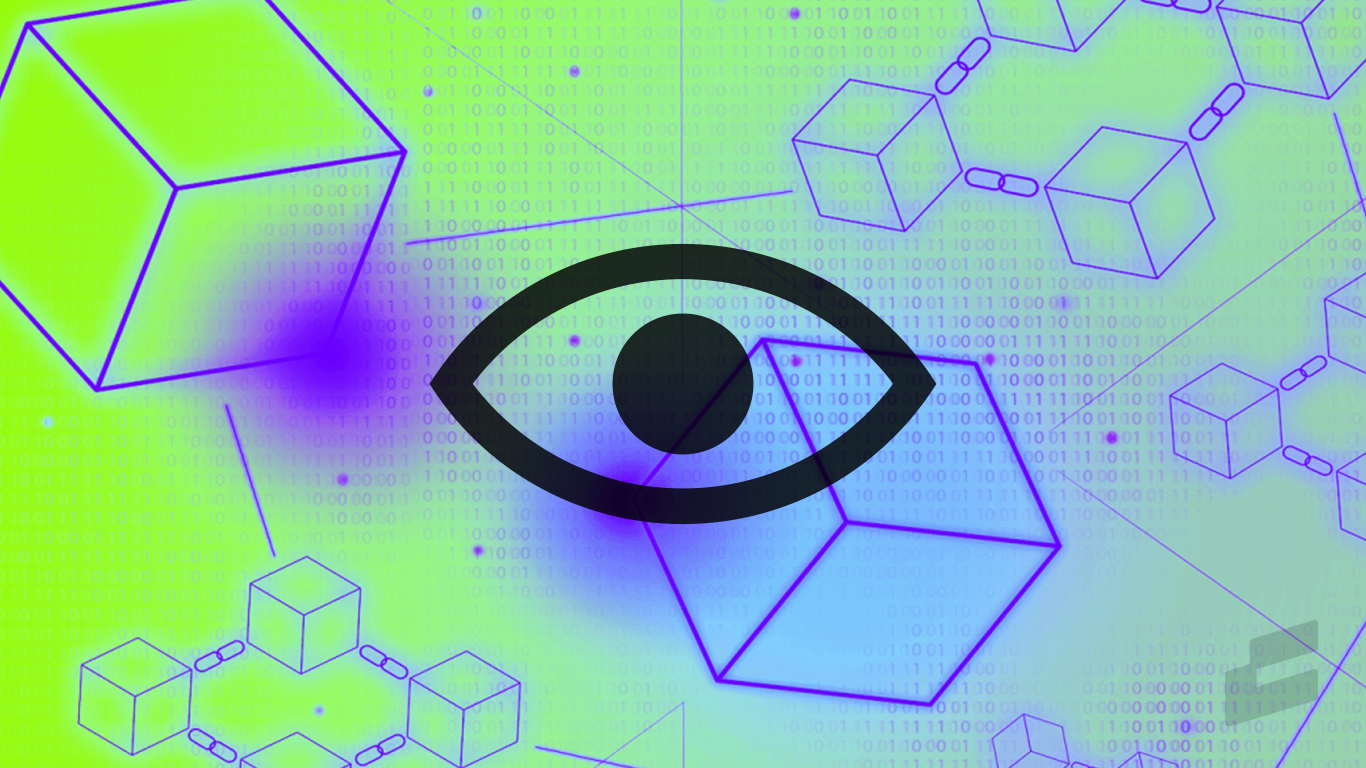As 2023 approaches fast, several investors and crypto enthusiasts are trying to ascertain the blockchains with the best potential for growth over the year.
As usual, these blockchains are likely to be new projects introducing novel and exciting features to the crypto space. However, it is also expected that existing blockchains with a track record of performance in previous years could be among the top contesters for leading projects in 2023.
To assist investors in this endeavor, we have combed through several projects in the crypto space, compiling a list of blockchains that show promising signals of an explosion of growth in 2023.
While nothing is certain, these blockchains may yield the highest profits in the coming year.
With all that said, the following are the top blockchains to look out for in 2023.
1. Ethereum
Ethereum is the leading blockchain platform for decentralized applications (dApps) and smart contract operations. It is home to over 2,700 dApps, including a considerable share of all DeFi protocols culminating into a TVL value of over $23.5 billion.
Ethereum’s native currency is Ether (ETH) and has a market cap of $148.99 billion – the second-largest behind Bitcoin. Due to such market dominance, Ethereum is always a favorite blockchain for long-term investors.
Following the completion of Ethereum’s Merge earlier in September, there’s been more buzz than usual around the crypto giant as we approach 2023.
The complete migration of Ethereum from Proof-of-Work to Proof-of-Stake led to significant improvements in its network infrastructure in terms of scalability, speed, network fees, and energy usage.
The Ethereum network is scheduled to undergo its next development phase – the Shanghai Upgrade – in the second half of 2023.
The biggest impact of this upgrade is expected to be a reduction in the gas fees of layer two solutions such as Optimism and Arbitrum, making it cheaper to interact with the Ethereum blockchain.
Another expected effect of the Shanghai upgrade is that investors who had staked ETH ahead of the Ethereum Merge will finally be allowed to withdraw their staked tokens.
The Shanghai upgrade will include significant improvements in the smart contract facilities of the Ethereum network, allowing Ethereum to remain the leading blockchain for smart contract operations for years to come.
2. Arbitrum
In just over a year of operation, Arbitrum has gained much popularity in the crypto space, becoming one of the most reliable scaling solutions for the Ethereum blockchain.
Arbitrum is designed to provide developers with a fast and scalable platform for building dApps while retaining the impeccable security of the Ethereum network.
Going into 2023, it is one blockchain with a high level of interest due to its ever-growing community of developers. This interest is further fueled by speculations that Arbitrum could release a native token – ARBI – even though there is no official confirmation from the development team.
Because Arbitrum currently has no native token, there is no way for investors to get direct exposure to the network. However, indirect investment opportunities include investing in Arbitrum-based dApps via yield farming, liquidity mining, DeFi lending, etc.
3. Aptos (APT)
Aptos was launched in October 2022, making it one of the newest blockchains in the space.
It is a layer-one platform with a customized programming language known as Move.
Theoretically, Aptos is able to process about 160,000 transactions per second. However, this project is particularly hyped due to its intriguing history.
The Aptos blockchain is an indirect product of the Diem blockchain initiative founded by Meta (aka Facebook). After Meta decided to halt its Diem blockchain project, some developers broke away to form the Aptos Labs, leading to the creation of the Aptos blockchain.
In 2023, Aptos is one blockchain to keep an eye on as its developers’ team aims to drastically reduce the network gas fees according to the user community demand.
To accomplish demand-driven gas costs on Aptos, the team has laid out a three-phase plan.
Phase one will look to implement a short-term measure in early January by revamping the operations on NFT data, which could result in 10x lower fees for dynamic NFTs minted off the platform.
Phase two, leading into Q1 of 2023, Aptos will then embark on a medium-term plan centered around constructing gas-efficient data structures based on documentation and indexing support.
The final phase will embark on the gas reduction plan, which is slated to be between late Q1-early Q2 of 2023. For this phase, Aptos will focus on delivering advanced gas models that unlink data storage from execution costs, thereby providing a long-term solution for the execution of demand-driven gas costs.
The Aptos blockchain features a native cryptocurrency – APT – that is used to pay transaction fees, deploy smart contracts and participate in network governance.
The APT token, currently priced at $3.82, has a circulating supply of 120 million tokens with a fixed maximum supply of 1 billion tokens.
4. Near (NEAR)
Near Protocol is a high-performance blockchain design to allow developers to easily build and deploy decentralized applications.
Near offers its users a super-fast, secure, and scalable smart contract platform powered by its unique sharding technology, Nightshade.
On the Near blockchain, developers can code in Web2 programming languages like JavaScript or Rust using high-powered dev tools and user-friendly SDKs.
According to the project’s roadmap, there are lots of exciting upgrades set for the coming year, most notably the implementation of the phase 2 sharding technology, which will scale the network to 100 shards.
Next year, the Near Protocol will also allow zero-balance accounts to exist, thereby making it easier for applications and wallets to register accounts for new users.
Other expected upgrades for the Near blockchain in 2023 and beyond include meta transactions, global storage, and support for elliptic curve keys.
The native cryptocurrency of the Near Protocol is the NEAR token and is the best way to invest in the Near blockchain.
NEAR is priced at $1.32 per token at the time of writing, with a circulating supply of 800 million tokens and a maximum market supply of 1 billion tokens.
5. Optimism
Similar to Arbitrum, Optimism is an Ethereum-based layer-two blockchain. It is designed to offer Ethereum developers a low-cost and lightning-fast environment for efficient dApp operations.
Optimism was launched in December 2021 and has quickly become one of the biggest Ethereum scaling solutions, with its total value locked set at $250 million.
In 2023, many blockchain experts anticipate that Optimism will replicate its impressive growth pattern, attaining even higher heights of adoption.
Optimism has already announced the plans to migrate its Goerli testnet to its newly designed architectural structure, Bedrock, on January 12, 2023.
Following a successful Testnet migration, Optimism will then commence plans to migrate its Mainnet as well to Bedrock. If accomplished, Optimism users will have access to the lowest possible L1 data fees as well as support for multiple execution clients, among other merits.
The Optimism chain is powered by the OP token, primarily used for payment of transaction fees. OP has no maximum supply and is subject to a yearly inflation rate of 2%.
6. Polygon
Polygon is the most prominent scaling platform of the Ethereum blockchain. Using multiple layer-two scaling solutions, Polygon aims to create a network of interconnected and scalable blockchain projects compatible with the Ethereum network.
The Polygon scaling network is one of the most highly rated blockchain ecosystems due to its steady performance even with the emergence of competitors such as Arbitrum and Optimism.
It is projected that numerous investors will continue viewing the blockchain as a trustworthy investment for years to come.
In 2023, the Polygon team is set to introduce several initiatives solely centered on the welfare of its user community. One such initiative includes improving the availability of support vouchers to early-stage projects, especially with the polygon grants program set to be halted.
Another update that you can expect is the launch of an NFT-based community participation program, which will serve to increase engagement with the user community and provide them with several benefits.
Other expected updates by Polygon in 2023 include an expansion of the Polygon Forum and the Polygon Guild Programs, among others.
Polygon’s native currency is MATIC, the 10th best-performing digital coin with a market cap of $6.7 billion.
MATIC is listed on virtually all exchanges and is the best way to invest in Polygon.
Aside from being a means of payment, MATIC is also a staking asset well known for its sizable returns.
7. Osmosis
Osmosis is a layer one blockchain built using the Cosmos-SDK. It employs a Proof-of-Stake consensus algorithm and is designed solely to power the operations of automated market makers (AMM).
The importance of Osmosis revolves around the Osmosis decentralized exchange (DEX), which many consider the resident DEX for the Cosmos ecosystem.
The Osmosis DEX provides the largest liquidity for Cosmos-based assets and enables easy withdrawal and deposits via the Interblockchain Communication protocol (IBC).
As we say farewell to 2022, the Osmosis developers team has stated there is much to look forward to in the coming year. These include a rapid increase in the available stablecoins on the exchange and implementation of the next Osmosis network upgrade – v14 – and the ProtoRec module.
The Osmosis user community can also expect the launch of Mars Protocol and other impending ecosystem projects.
There is also expected to be a significant improvement in cross-chain composability and general message passing as the IBC is expected to gain more ground in 2023.
Transaction fees on the Osmosis blockchain are paid for using the platform’s native token, OSMO.
The OSMO token is also used for governance and forms part of the base pair for many liquidity pools on the Osmosis DEX.
Currently, OSMO is priced at $0.74. OSMO has a maximum supply of 1 billion tokens and a circulating supply of 492 million OSMO at the time of writing.
8. Kujira
Kujira is another Cosmos-SDK-based blockchain tipped to be among the headliners of the crypto space in 2023.
Kujira aims to create a decentralized ecosystem of sustainable FinTech solutions for protocols, developers, and web3 users.
To achieve its goal, Kujira uses five dApps: FIN, ORCA, BLUE, BOW, and FINDER.
It is also worth noting that Kujira is a unique blockchain as it is semi-permissionsed, meaning for any smart contract to be deployed, it must be first approved by the Kujira DAO.
Going into 2023, Kujira will attempt to increase its available liquidity by attracting real revenue-generating businesses to its platform. The onboarding of real-world business onto Kujira is expected to result in more use cases of the USK token, Kujira’s native stablecoin.
In the second half of 2023, Kujira intends to build a payment infrastructure compatible with real-world applications. To this end, they have begun discussions with various crypto exchanges and business vendors in South America and Africa.
The native cryptocurrency of the Kujira network is known as KUJI, which is used for staking, governance, and the payment of transaction fees. The KUJI token has a max supply of 122 million tokens and a market cap of $48 million.
9. Flow
Flow is one of the leading blockchain platforms for games, dApps, and NFTs. It was initially designed solely for gaming purposes, but its application has expanded over time.
Flow powers popular blockchain applications such as the NFT collection NBA Top Shots and the blockchain game CryptoKitties.
The Flow blockchain scales in a manner that does not use sharding techniques, allowing transactions to be executed quickly and at a low cost.
For the year 2023, Flow is expected to undergo significant updates in all parts of its network, including the cadence programming language, developer tool systems, and smart contract ecosystem.
Updates to Flow are expected to focus on core protocol operations, including network performance and scalability, the implementation of zero downtime protocol rolling upgrade, and support for permissionless node operations.
The native currency of Flow is FLOW, which is currently priced at $0.74. The FLOW token has a market cap of $766 million and no maximum supply. Because its supply is unlimited, the FLOW token is subject to a yearly inflation rate of 3.75%.
10. Algorand
Algorand is a blockchain designed to solve the blockchain trilemma of simultaneously providing scalability, security, and decentralization.
Algorand is a smart contract-compatible platform allowing developers to build and deploy decentralized applications with respective native tokens.
Algorand is powered by a unique Proof-of-Stake variant known as the Pure Proof-of-Stake (PPoS) consensus algorithm, which selects validators randomly regardless of their stake weight.
In 2023, Algorand aims to form strategic partnerships with more traditional organizations following its recent partnership with the world footballing body, FIFA.
According to the project’s head of web 3.0, Shamir Ozery, Algorand will focus on establishing strategic partnerships with large organizations such as sports teams or sports leagues and leading brands in fashion, music, and luxury.
Algorand’s goal is to promote its application of Web 3 among these traditional institutions via blockchain applications such as NFTs, DAOs, and the metaverse.
The native cryptocurrency of the Algorand ecosystem is ALGO. It has a maximum supply of 10 billion tokens, out of which 71% are in circulation.
Wrap Up
With the continuous growth and expansion of the blockchain industry, it can be easily inferred that blockchains are set to be a pivotal part of the world’s future.
For the coming year, we believe the blockchains listed above have the most potential to make the most impact in the industry.
However, before choosing to invest in any blockchain, remember to conduct extensive research taking into consideration all associated risks.








